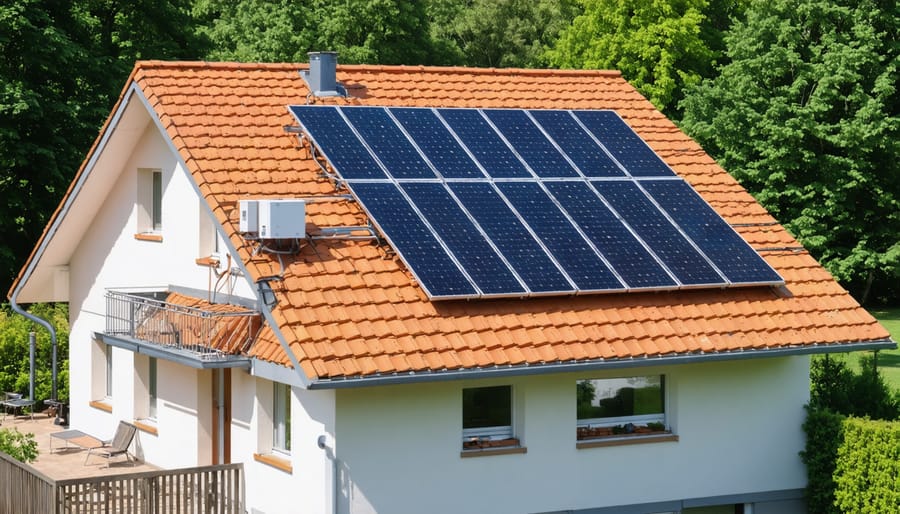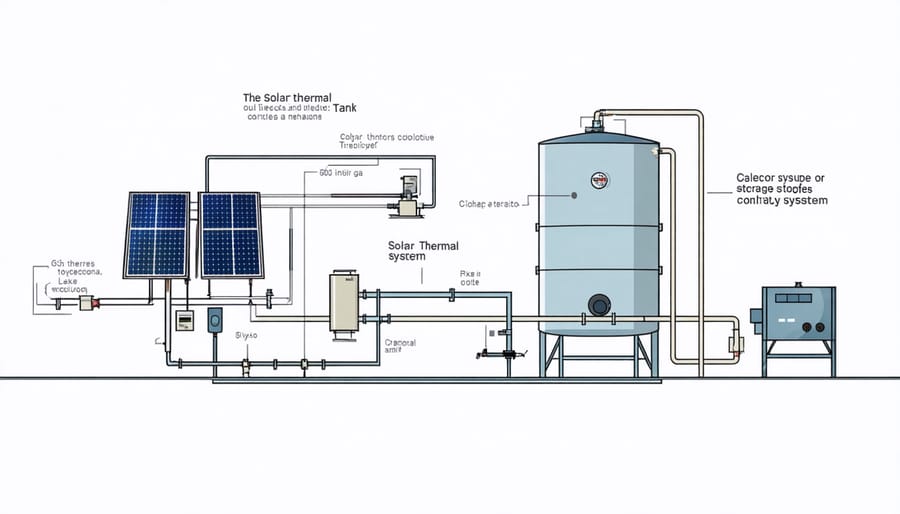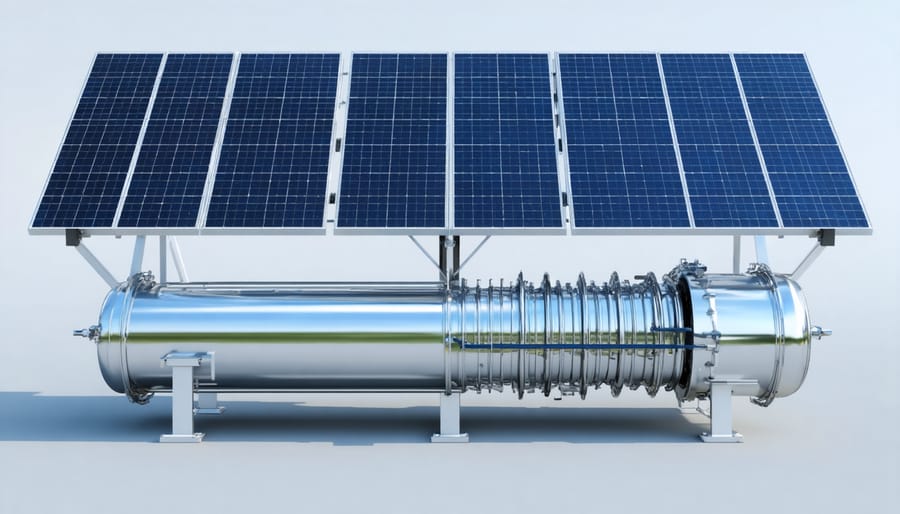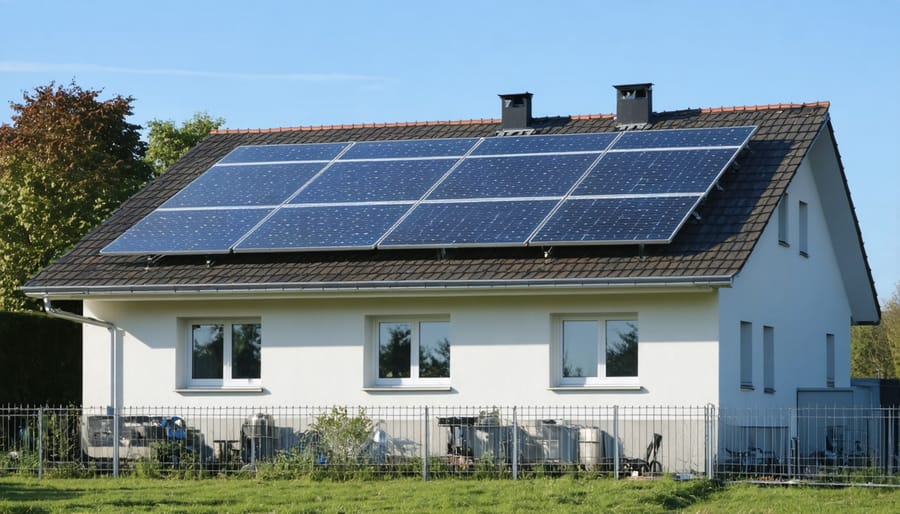Solar Thermal Systems: The Smart Way to Harness Heat Energy in Europe

Harness the transformative power of solar thermal energy systems to revolutionize how European homes and industries capture, store, and utilize the sun’s abundant heat. These sophisticated thermal collection systems represent a crucial cornerstone in Europe’s renewable energy transition, converting solar radiation into practical heating solutions with remarkable efficiency rates of up to 70%. From providing year-round domestic hot water and space heating to powering industrial processes, solar thermal technologies offer a proven, sustainable alternative to conventional heating methods across the continent.
As energy costs continue to rise and climate targets become increasingly stringent, solar thermal systems emerge as a strategic investment that combines environmental responsibility with economic sensibility. Modern installations seamlessly integrate with existing heating infrastructure, requiring minimal maintenance while delivering consistent performance for 20-25 years. Whether mounted on residential rooftops or scaled for industrial applications, these systems exemplify the practical implementation of renewable technology in our daily lives, marking a significant step toward energy independence and sustainability.
How Solar Thermal Systems Transform Sunlight into Usable Heat
Essential Components and Their Functions
Solar thermal energy systems comprise four essential components that work together seamlessly to harness and utilise solar energy effectively. The solar collectors, typically mounted on rooftops or open spaces, serve as the primary component, capturing solar radiation and converting it into heat energy. These collectors come in two main varieties: flat-plate collectors, ideal for domestic hot water and space heating, and evacuated tube collectors, which offer superior performance in colder European climates.
The heat transfer fluid, usually a mixture of water and antifreeze, circulates through the system, carrying captured heat from the collectors to where it’s needed. This specially formulated fluid ensures reliable performance even during freezing winter conditions while maintaining optimal heat transfer properties.
Storage tanks form the system’s thermal battery, retaining heated water for use when needed. Modern tanks feature advanced insulation technology, minimising heat loss and maintaining water temperature for extended periods. This component is crucial for ensuring consistent hot water supply during cloudy days or nighttime.
The control system acts as the brain of the installation, managing fluid circulation, monitoring temperatures, and optimising system performance. Advanced controllers can integrate with home automation systems, providing real-time monitoring and adjustment capabilities. These smart controls enhance efficiency by managing pump operation, preventing overheating, and protecting against frost damage, ensuring the system operates at peak efficiency throughout the year.

Types of Solar Thermal Collectors
Solar thermal collectors are the cornerstone of any solar thermal system, and three main types dominate the European market, each with distinct characteristics and applications.
Flat-plate collectors are the most commonly installed option for residential and commercial applications. These collectors consist of a dark absorber plate beneath a transparent glass cover, housed within an insulated frame. Their robust design and reliable performance make them particularly suitable for domestic hot water and space heating in moderate climates, offering an excellent balance of efficiency and cost-effectiveness.
Evacuated tube collectors represent a more advanced solution, featuring glass tubes with a vacuum layer that minimizes heat loss. This design enables them to maintain high efficiency even in colder climates or during winter months, making them increasingly popular in Northern European regions. While typically more expensive than flat-plate collectors, their superior performance in challenging conditions often justifies the investment.
Concentrating collectors, primarily used in industrial applications and large-scale installations, employ mirrors or lenses to focus sunlight onto a smaller receiver area. These systems can achieve significantly higher temperatures than other collectors, making them ideal for industrial process heat, steam generation, and even electricity production. While less common in residential settings, they play a crucial role in industrial decarbonisation efforts across Europe.
The choice between these collector types depends on factors including climate conditions, application requirements, and available budget.

Applications in European Homes and Industries

Domestic Hot Water and Space Heating
Solar thermal systems offer European homeowners an efficient and sustainable solution for both domestic hot water production and space heating solutions. These systems can provide up to 60-70% of a household’s annual hot water needs and contribute significantly to space heating requirements, particularly during shoulder seasons.
The integration process typically involves installing solar collectors on the roof, which absorb solar radiation and transfer the heat to a working fluid. This heated fluid then circulates through a well-insulated storage tank, where it transfers its heat to the domestic water supply or heating system. Modern systems feature intelligent controls that optimize performance based on weather conditions and household demand patterns.
For maximum efficiency, solar thermal systems can be combined with existing heating infrastructure, such as condensing boilers or heat pumps. This integration ensures reliable hot water and heating throughout the year, even during periods of limited sunshine. The storage tank acts as a thermal battery, maintaining hot water availability for several days.
The benefits for homeowners are substantial: reduced energy bills, decreased carbon footprint, and increased property value. In many European countries, government incentives and subsidies make the initial investment more attractive, with typical payback periods ranging from 5 to 10 years. Maintenance requirements are minimal, usually consisting of annual inspections and occasional cleaning of the collectors.
When properly sized and installed, these systems can maintain comfortable indoor temperatures while providing abundant hot water, making them an increasingly popular choice for sustainable home energy management across Europe.
Industrial Process Heat
Solar thermal technology has become increasingly vital in European industrial processes, offering sustainable solutions for high-temperature applications. Companies across the continent are integrating these systems into their industrial energy management strategies, achieving remarkable results in both cost reduction and environmental impact.
A standout example is the Feldschlösschen brewery in Switzerland, where solar thermal collectors covering 1,300 square meters generate process heat for bottle washing and pasteurization. This installation reduces CO2 emissions by 60 tonnes annually while meeting 15% of the facility’s heating requirements.
In Spain, the SHIP (Solar Heat for Industrial Processes) initiative has transformed the food processing sector. The Conesa Group’s tomato processing plant utilizes a 30,000 square meter solar field, providing steam for cooking and sterilization processes. This system delivers temperatures up to 200°C, demonstrating the technology’s capability to meet demanding industrial requirements.
Austrian dairy producers have also embraced solar thermal solutions, with several facilities implementing large-scale systems for pasteurization and cleaning processes. These installations typically achieve payback periods of 4-6 years while significantly reducing fossil fuel dependency.
The success of these implementations has been supported by EU funding initiatives and technical expertise from research institutions. Industry leaders report that modern solar thermal systems can reliably deliver temperatures between 60°C and 400°C, making them suitable for various manufacturing processes, from food production to chemical processing and textile treatment.
Integration and System Design Considerations
System Sizing and Configuration
Proper sizing and configuration of solar thermal systems are crucial for achieving maximum efficiency and return on investment. An optimal system design begins with a thorough assessment of your energy requirements, available roof space, and local climate conditions.
For residential applications, the general rule of thumb is 1-1.5 square meters of collector area per person for domestic hot water systems. However, systems supporting space heating typically require 2-3 times more collector area. Storage tank capacity should match daily hot water consumption, usually calculated at 50-60 litres per person per day.
Industrial installations demand more precise calculations based on process heat requirements, peak loads, and operational schedules. Key factors include:
– Peak thermal load requirements
– Daily and seasonal usage patterns
– Available installation space
– Integration with existing heating systems
– Local solar radiation levels
– System orientation and tilt angle
Professional installers should conduct detailed heat load calculations and solar radiation analysis to determine the optimal collector area and storage capacity. Modern simulation tools help predict system performance under various conditions, ensuring the installation meets both current needs and future expansion possibilities.
Regular monitoring systems should be incorporated to track performance and identify potential optimization opportunities, maintaining system efficiency throughout its lifecycle.
Integration with Existing Infrastructure
Solar thermal systems can seamlessly integrate with existing heating infrastructure, offering a hybrid solution that maximises efficiency while maintaining reliability. The most common integration method involves connecting solar thermal collectors to conventional boiler systems through a thermal storage tank. This setup allows the solar system to act as the primary heat source while keeping the conventional system as backup during periods of limited sunshine.
For residential applications, solar thermal systems typically connect to existing gas or oil boilers through a pre-heat tank. This arrangement enables the solar system to pre-heat water before it enters the conventional boiler, reducing fossil fuel consumption while ensuring consistent hot water supply. Modern control systems automatically manage the interaction between both heat sources, optimising energy usage based on demand and solar availability.
In industrial settings, solar thermal integration often involves more complex configurations. Multiple heat exchangers may be employed to serve different temperature requirements, while sophisticated control systems ensure optimal heat distribution across various processes. The integration can be particularly effective in industries with consistent heat demands, such as food processing or textile manufacturing.
To ensure successful integration, proper system sizing and hydraulic balancing are essential. Professional installers should conduct detailed assessments of existing infrastructure, including pipe networks, heat distribution systems, and control mechanisms. This evaluation helps determine the most efficient integration strategy while minimising disruption to ongoing operations.
Economic and Environmental Benefits
Solar thermal energy systems offer compelling economic advantages for European property owners and businesses, with potential energy cost reductions of 50-70% for domestic hot water production. In regions like Southern Europe, where solar irradiance is abundant, the return on investment can be achieved within 4-6 years, making it an attractive long-term investment.
The initial installation costs are often offset by various national incentive schemes and EU-wide renewable energy initiatives. Countries like Germany, Spain, and Italy provide substantial subsidies and tax benefits for both residential and commercial installations, significantly reducing the upfront investment burden.
From an environmental perspective, solar thermal systems contribute significantly to reducing carbon emissions. A typical residential system can prevent 1-2 tonnes of CO2 emissions annually, equivalent to taking a car off the road for several months. For industrial applications, the environmental impact is even more substantial, with large-scale systems capable of reducing industrial carbon footprints by hundreds of tonnes annually.
These systems also help reduce dependency on fossil fuels, contributing to energy security and independence. In the European context, this aligns perfectly with the EU’s Green Deal objectives and the continent’s commitment to achieving carbon neutrality by 2050.
Water conservation is another notable benefit, particularly in industrial applications where solar thermal systems can significantly reduce water consumption in processing and cooling operations. This is especially valuable in water-stressed regions of Southern Europe.
The lifecycle assessment of solar thermal systems shows exceptional sustainability credentials, with most components being recyclable and having a minimal environmental impact during manufacturing. Modern systems typically last 20-25 years, providing consistent environmental benefits throughout their operational life while requiring minimal maintenance.
Moreover, the integration of solar thermal systems creates local job opportunities in installation, maintenance, and manufacturing sectors, contributing to Europe’s green economy growth and technological leadership in renewable energy solutions.
Solar thermal energy systems represent a powerful and proven solution for Europe’s sustainable energy future. Throughout this exploration, we’ve seen how these systems effectively harness the sun’s energy for heating, cooling, and industrial processes, offering significant benefits for both residential and commercial applications.
The technology’s versatility is particularly noteworthy, from simple domestic hot water systems to sophisticated industrial heating installations. With energy efficiency rates reaching up to 70%, solar thermal solutions demonstrate exceptional performance in reducing both energy costs and carbon emissions. The European market’s continued growth and technological advancement have made these systems more accessible and cost-effective than ever before.
The environmental impact cannot be understated. By reducing reliance on fossil fuels, solar thermal systems play a crucial role in meeting EU climate targets and promoting energy independence. The technology’s proven track record, combined with generous incentive programs across many European countries, makes it an increasingly attractive investment for property owners and businesses alike.
As we move towards a more sustainable future, the adoption of solar thermal energy systems represents a practical and economically sound decision. Whether you’re a homeowner looking to reduce energy bills or an industry leader seeking to minimize your carbon footprint, solar thermal technology offers a reliable, efficient, and future-proof solution. With continued technological improvements and growing installation expertise across Europe, there’s never been a better time to embrace this sustainable energy solution.
Leave a Reply